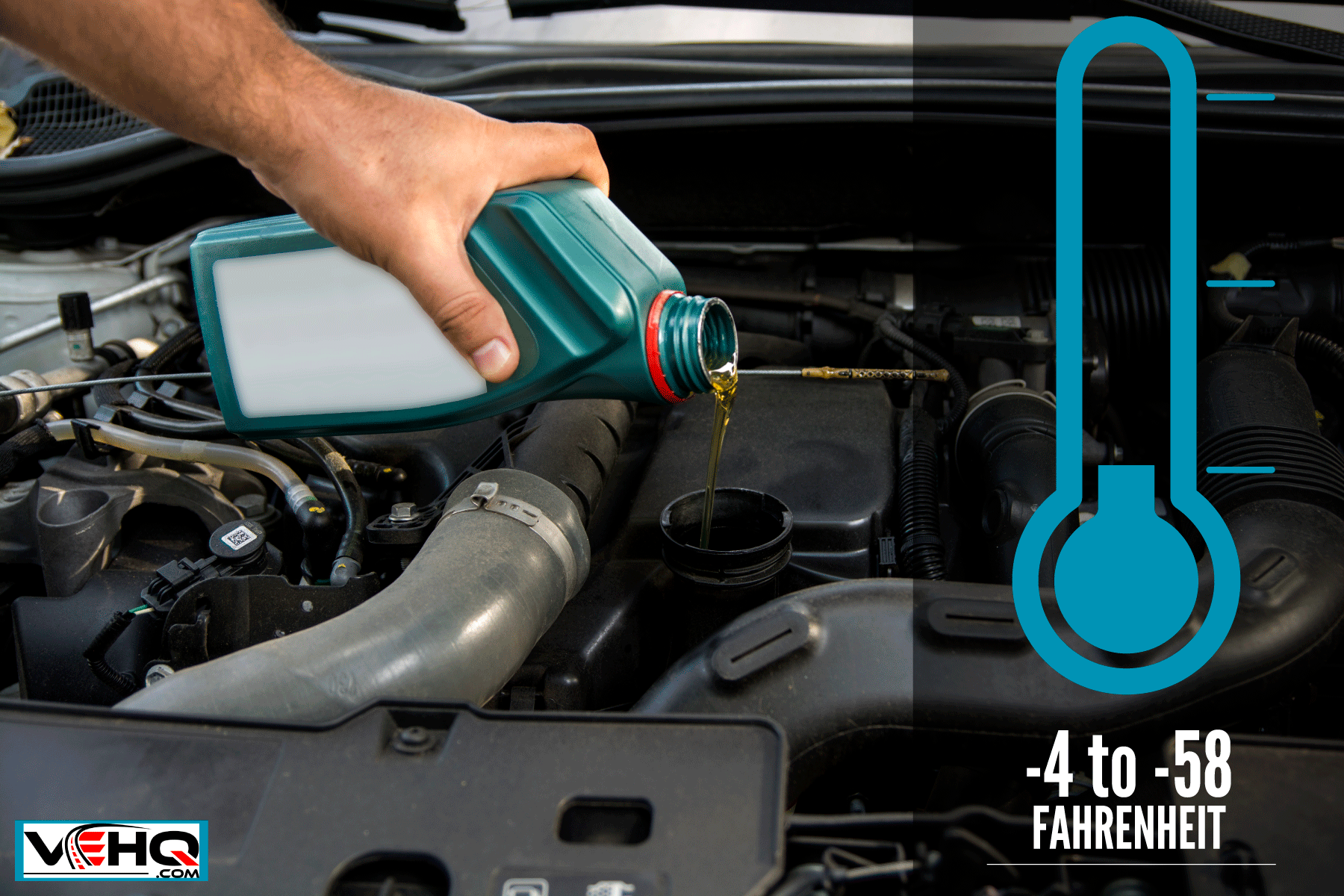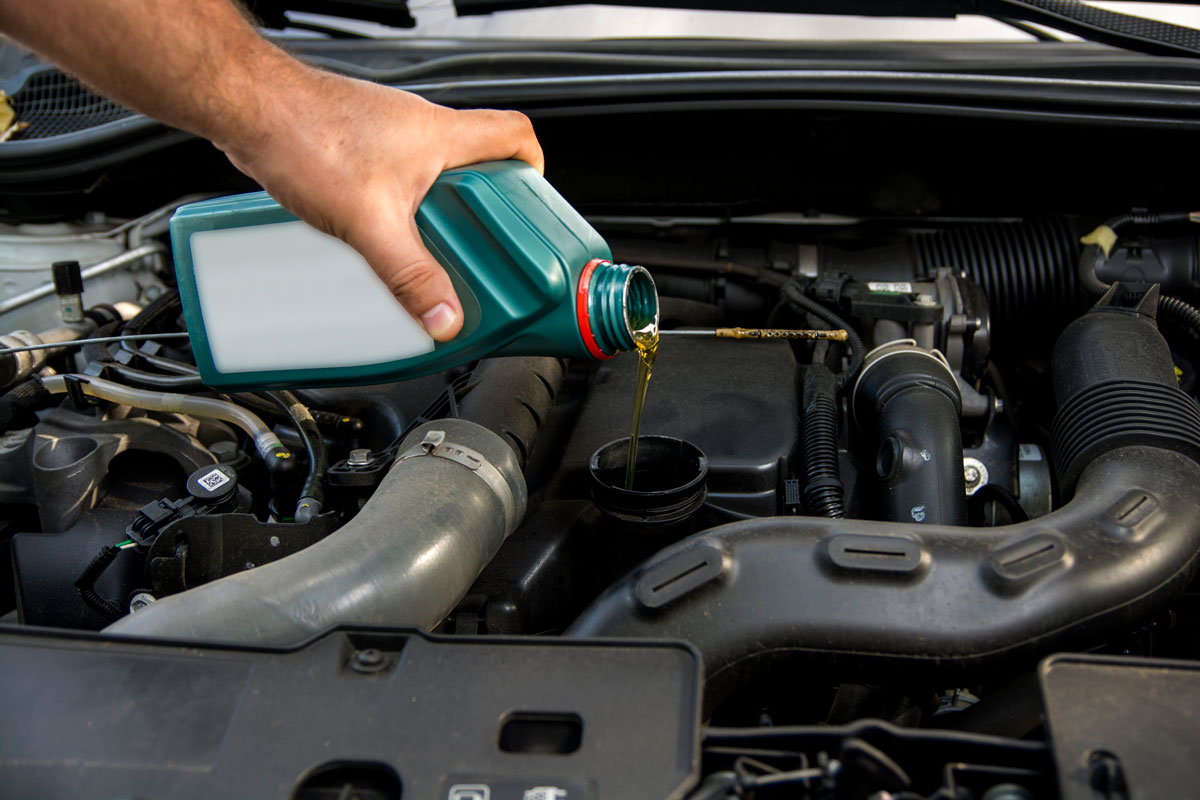Your motor oil lubricates and protects your engine from excessive wear and corrosion. To perform these functions, the oil needs to be in a liquid state. In this regard, you may be wondering if engine oil can freeze in cold weather. We've done the research for your reading pleasure.
Yes, engine oil can freeze. However, engine oil does not need to reach its actual freezing point to become unusable. Instead, engine oil only needs to reach its pour point to become semi-solid and unable to flow inside the engine.
Engine oils have pour points between -4 to -58 degrees Fahrenheit (-20 to -50 degrees Celsius).
Would you like to know more about how your engine oil behaves during cold weather? Do read on, and we'll explore this "chilling" subject together.

Can Your Oil Freeze?
A substance's reezing point is defined as the temperature at which liquid matter becomes solid. Although this may sound like a geeky topic, many of us already know that water freezes into ice at 32 degrees Fahrenheit (0 degrees Celsius).
However, not many studies explore the freezing point of engine oil. There are quite a few reasons why this is so.
- Unlike water, engine oils have different chemical compositions and blend ratios. Thus, not all engine oils have the same flash points, freezing points, cloud points, and pour points.
- Engine oil doesn't need to freeze in order to become unusable for its intended purposes. It only needs to become unable to flow before it becomes useless for engine lubrication and protection.
Nevertheless, there are some people who have shared that engine oil can indeed freeze. However, this requires the usage of elements (e.g., liquid nitrogen) that do not occur naturally on Earth.
At What Temperature Will Motor Oil Freeze?

Based on actual tests, liquid nitrogen can freeze engine oil to a real solid state. Liquid nitrogen has a temperature of -320 degrees Fahrenheit (-196 degrees Celsius).
As a point of reference, the coldest place on our planet registered a temperature of -135.76 degrees Fahrenheit (-93.2 degrees Celsius) in 2010. Although it is indeed extremely cold weather, it is nowhere near liquid nitrogen temperature.
Check out this simple but illustrative video on how different oils solidify when combined with liquid nitrogen.
What Is Engine Oil Pour Point?
As mentioned above, engine oil doesn't need to freeze to become unusable in car engines. Because of their chemical composition, engine oils turn into semi-solid gels way earlier than they completely freeze solid.
An engine oil's pour point is the lowest temperature at which it can flow by gravity in a controlled laboratory test. If it gets 5 degrees Fahrenheit (3 degrees Celsius) colder, the oil will not move at all.
Conventional mineral engine oils have a pour point somewhere around -4 degrees Fahrenheit (-20 degrees Celsius). More premium mineral engine oils can remain liquid at colder temperatures due to additives.
See the video below to understand how additives like pour point depressants help engine oils remain liquid for colder temperatures.
Can Synthetic Motor Oil Freeze?
Unlike cheap mineral oils, the highest-quality synthetic engine oils can have pour points as low as -58 degrees Fahrenheit (-50 degrees Celsius). These synthetic oils do not contain wax that makes mineral oils congeal earlier.
What Happens When Engine Oil Gets Cold?

Based on what we've learned so far, we know that engine oil turns from liquid to gel-like consistency as the weather gets colder. In a semi-solid state, the engine oil will not be able to fulfill its designated role.
Many automotive engineers have concluded that engines experience the most wear during cold start-ups. This conclusion comes from different actual cold-weather scenarios when oil doesn't flow properly.
After you turn off the engine, gravity takes only five minutes to pull most of the engine oil back down to the oil sump/pan. Even during cold weather, the engine's remaining heat after an operation is enough to keep the oil flowing.
After leaving the car overnight, however, extremely cold temperatures can make the oil become thicker or even gel-like. If this happens, then insufficient oil flow can lead to many engine problems.
Cold Engine Oil Problems
- Engines usually experience a rich air-fuel mixture during start-up. This pre-ignition mixture washes off any remaining oil film from the piston's edges and cylinder walls.
- Air may condense inside the engine and reach the unlubricated and unprotected inner engine surfaces. This will cause oxidation and corrosion inside the engine block.
- Cold and unlubricated pistons and cylinders will not seal properly without proper oil flow. This will allow the combustion exhaust gases to "blow by" past the piston rings and cause oil contamination.
- If the oil in the slump thickens or congeals, then it will not flow to the engine during a cold start-up. All the engine's moving parts will wear down faster due to the excessive heat and friction.
- Thick and partially congealed oil can clog up the oil filter prematurely. This will restrict the oil flow even more, at least until the engine heats up enough to liquify all the oil completely.
- Extreme hot or cold temperatures can cause chemical degradation in the oil. For instance, rust inhibitor additives may precipitate and lose functionality during extremely cold weather.
What Is The Best Oil To Use In Winter?
In the battle between conventional mineral oils and synthetic oils, many of us know that the latter wins in terms of longevity. In exchange for a more premium price point, we can change engine oil less often.
However, synthetic oil's advantages do not stop there. Here are the other advantages of synthetic oil.
- Better flow during cold temperatures
- More consistent viscosity at high operating temperatures
- Less precipitation and deposits
- Higher level of engine protection against oxidation and corrosion
- Improved fuel consumption
- Longer engine lifespan
Some of the older cars still plying the roads may still require conventional mineral oil for their engines. These engines were designed to run on less modern but also less expensive lubricants.
Nowadays, however, we can safely say that synthetic oil is the best one to use for most modern cars during the winter season. Many automotive experts recommend using 5W-30 (or lower) synthetic motor oils during this frigid period.
What Do The Numbers On Oil Mean?

You probably have noticed that your engine oil container has some big weird numbers printed on the label. These numbers refer to the engine oil's grade or weight as defined by the Society of Automotive Engineers (SAE).
With regard to the motor or engine oil, we can use the terms "grade," "weight," "viscosity," and "thickness" interchangeably. To simplify, the higher the numbers on the label, the higher the viscosity and the thicker the oil is.
In earlier times, straight-weight or single-grade engine oils were common. A SAE50 oil, for example, is thicker than a SAE30 oil. Straight-weight oils still have some practical uses for performance cars today, but we'll save that for another topic.
Nowadays, modern everyday cars use multi-grade engine oils. A 20W-50 oil is more viscous than 5W-30 engine oil. So what do these two numbers mean? Let's use the more common 5W-30 grade oil as an example.
The "5W" grade means that the oil behaves like a 5-weight in cold temperature. This means that the oil is sufficiently thin and will flow much easier during the winter season than thicker oil will.
The second "30" grade means that the oil behaves like a 30-weight oil during normal engine operating temperature (approx 212 to 302 degrees Fahrenheit).
Check out this Mobil 1 fully synthetic motor oil on Amazon!
How Do I Winterize My Car?
During the winter, your engine oil isn't your only concern with your beloved ride. To have a safer driving experience and better peace of mind, you need to "winterize" your car for the season.
Below are a few tips to prepare your car for winter.
- Check the battery. Your car battery may lose a third of its charge at 32 degrees Fahrenheit and a half when temperatures reach zero degrees Fahrenheit. Get a new battery if needed to prepare for cold and hard starts.
- Use the appropriate tires. If your driving environment becomes challenging during the winter season, then you should let your car wear the appropriate shoes. Winter tires or snow chains may be in order.
- Change your engine oil. If your oil is dated or not suitable for your area's winter temperatures, then get your oil changed before the cold season starts. Always check your manual to see if your engine can take thinner oil grades.
- Revisit your preventive maintenance schedule. Along with your engine oil change, you may want to check your belts, wipers, hoses, wires, and other body and engine components.
- Keep your fuel tank filled. A near-empty fuel tank causes more fuel line condensation. During cold periods, this condensation can freeze up and clog the fuel line.
- Check up on your fluids. Get your engine antifreeze, windshield washer, transmission oil, and brake fluid checked and updated.
- Pack emergency winter supplies in your car. In case of road mishaps or extremely inclement weather, you should have an emergency survival kit in your vehicle.
- Learn proper winter driving. You should drive more carefully during this season because of snowy or icy roads, as well as poor visibility. In case your car starts to slide, you should know what to do.
Wrapping Up

Engine oil can freeze up to a brittle solid state. However, no naturally-occurring temperature on Earth is low enough to lead to such freezing. Nonetheless, engine oil thickens and can become a semi-solid gel at -4 to -58 degrees Fahrenheit.
Thank you very much for reading. We hope we were able to help you understand engine oils and their performance during cold weather.
If you would like to find more interesting reads about car lubricants and other automotive topics, then do check out these great articles below.
Where Does Antifreeze/Coolant Go In Your Car?
How To Keep Transmission Cool When Towing

